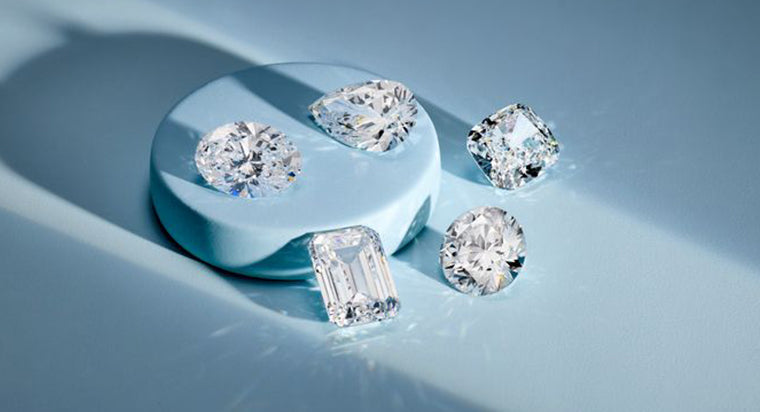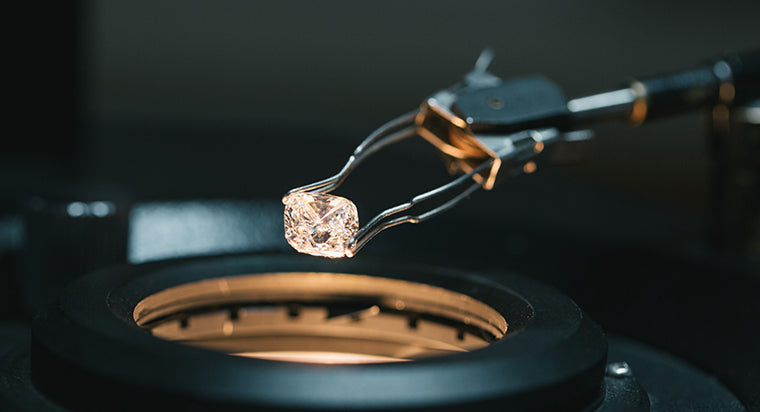G - J Colored Diamonds: Near Colorless Quality
Diamonds have small trace amount of color tints that can affect the diamond's sparkle. Coloration of a diamond is typically due to chemical impurities found naturally within the diamond during it growth process of millions of years. Most often, especially when set in engagement rings or other jewelry, your eyes will not even see the color in the diamond, but they will see less sparkle from it. The absence of color is the most desired way to see a diamond. The less the shade or tint of color, the rarer and more valuable the diamond becomes. Generally, the differences in color are quite small, but the changes in pricing are quite large. Often times, it is a difference of 10-15% between each color grade.
TABLE OF CONTENTS
Diamond Color Range
The Gemological Institute of America established a range of colors on a scale from D - Z. D is the highest with no visible color and Z is light yellow. It is not a requirement that every diamond be colorless. In fact, because the colorless range is so rare it really carries a substantial premium. That's why is it less popular than the near colorless range, which are colors G, H, I and J.
Learn all about natural diamond and lab diamond color below. What is a near colorless diamond and where to diamonds graded G, H, I and J fall on the color scale?
Will near colorless diamonds look yellow or will they look white and sparkling when set in a ring?
Watch Anubh Shah, our company founder, walk through the essentials about diamond color. Learn more about pricing, visual differences and other important selection criteria as it relates to the 4 C's below.
Why Should I Choose a G or H Color Diamond?
G and H colored diamonds are generally colored premium blend of value and quality. These are considered high on the scale and border the colorless range of D, E and F. The customer looking for a white diamond without a distracting color shade, but also a higher cut, color and/or clarity, should choose the G or H colored diamond. These diamond, believe it or not, represent only 2-3% of all gem quality diamonds. That's still quite rare when you think about the amount of diamonds in the world. On an electronic colorimeter, the score would be between 1.50 - 2.49.
What are I and J Color Diamonds?
The I and J colored diamonds, while still in the near colorless range, will begin to show very very light tint of yellow or brown. Your eye may not even pick up on the shading, but the diamond may visibly look less bright than a diamond with a higher grade, such as F or G. Therefore, you'll typically see that the price difference is largest between G/H to I/J. However, this should not discourage purchasing in this range.
Why Should I Purchase I or J Color Diamonds?
Diamonds with an I or J color are a fantastic value. They are extremely popular and really allow you to maximum other factors like carat or clarity. It is common to find customers purchasing high carat, high clarity diamonds with an I or J color. These diamonds still have very small trace chemicals tinting the yellowish look so it's not such a large impact on the diamond's sparkle. On a colorimeter, the score falls 2.50 - 3.49.
Overall, we're big fans of this color range because the selection pool opens up nicely for larger carats and clarities. This particularly matters because carat and clarity can have more visual appearance than a diamond's color grade.
FAQs
What is a colorless diamond?
Are colorless diamonds better for engagement rings?
What percentage of natural diamonds are colorless?
Are all lab diamonds colorless?









